
NHL Signings & Free Agents


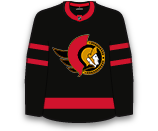


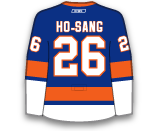
Tierney is a solid two-way veteran that has averaged 13 goals and 31 assists (41 points) over the last three seasons. He's a valuable player for the Senators because he can play centre or the wing and can play up and down their lineup. The two-year deal will also allow the Senators to expose him in the Seattle expansion draft.

Given Carter Hutton's struggles since signing with the Sabress, Ullmark has become their No.1 netminder over the last two seasons. He's coming off of a solid campaign in 2020 but ranks tied for 26th in SV% (.910) and tied for 35th in GAA (2.91) since the start of 2019. The Sabres have improved this offseason but Ullmark remains nothing more than a low-end No.2 fantasy netminder.

Leivo appeared in just 36 games with the Canucks last season, picking up seven goals and 12 assists (19 points). The Leivo signing continues the Flames' trend of bringing in former Canucks this offseason. With Dominik Simon and Joakim Nordstrom also signing with the Flames, they have plenty of internal competition for bottom-6 roles this season.
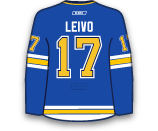
In 2020, Reinhart was on-pace to set a new career-high in goals but when the season was paused he had 22 goals and 28 assists (50 points) in 69 games. Reinhart has not missed a game in three seasons, averaging 24 goals and 34 assists (58 points) per 82 games. With the addition of Taylor Hall, Reinhart could be pushed from the top-line in 2021 but should still finish with 20-plus goals and 30-plus assists.

Forsling had 26 points (8G / 16A) in 57 games with the Charlotte Checkers (AHL) during his first season in the Hurricanes' organization. He was acquired from the Blackhawks in the summer of 2019 in a deal that sent Calvin de Haan and Aleksi Saarela to Chicago. Given the fact that Carolina has such a deep blueline and Jake Bean is ahead of him on the AHL depth chart, Forsling likely won't be in the NHL in 2021.

Bow was 12-11-3 with a 3.31 GAA and .895 SV% in 30 games with the Texas Stars (AHL) in 2020. Bow is fourth on the Stars goaltending depth chart, sitting behind Ben Bishop, Anton Khudobin and Jake Oettinger. Bow has two career NHL appearances.
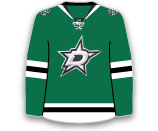
Rossi was the No.9 overall pick in the latest NHL Draft after leading the OHL with 120 points (39G / 81A) in 56 games with the Ottawa 67's. With the OHL season in limbo, Rossi will probably get a chance to make the Wild out of training camp but he will likely go to the OHL once their season gets underway.

Belpedio spent the entire 2020 season with the Iowa Wild (AHL), collecting 20 points (5G / 15A) and 102 PIMS in 62 games. Since being drafted in the third round in 2014, the 24-year-old defenseman has appeared in three NHL games, picking up two assists.

Nesterov was originally a fifth-round pick of the Lightning back in 2011. He spent four seasons in North America, including parts of three seasons in the NHL before returning to Russia and playing in the KHL from 2018-to-2020. Nesterov had 23 points (7G / 16A) in 53 games with CSKA Moscow in the most recent season and has 33 points (9G / 24A) in 132 career NHL games with Tampa Bay and Montreal.
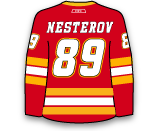
Dermott was an RFA and gets a one-year, "show-me" deal as we head into the 2021 campaign. In 2020, Dermott matched his career-best of four goals but compiled just 11 points in 56 games. Dermott doesn't have a lot of offensive upside and will likely be a third-pairing defenseman in 2021.

Kulikov had two goals and eight assists (10 points) in 51 game with the Jets last season. Kulikov topped 100 huts for the sixth time in his 11-year career and will bring a physical element to the Devils blueline. His one-year deal buys Ty Smith an extra year of development before he likely becomes a full-time NHLer in 2022.

Nelson spent all of 2020 in the AHL, picking up four goals and eight assists (12 points) in 48 games with the Rochester Americans. The 28-year-old has 18 points (4G / 14A) in 93 career NHL games (all with Buffalo) but will almost certainly start 2021 in the AHL again.
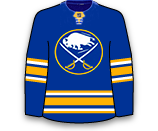
Bibeau has primarily served as a AHL netminder since being drafted in the sixth-round in 2013. He has played just four NHL games, allowing nine goals on 97 shots (.907 SV%). He will likely serve as Alex Nedeljkovic's backup in the AHL to start 2021.
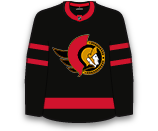
Gurianov made the jump to the NHL in 2020 and used his great shot to score 20 goals with nine assists (29 points) in 64 regular seasons games. Once the NHL returned to play he flourished in the postseason, picking up 17 points (9G / 8A) in 27 games. He has a chance to become a 25-25 player in the Stars' top-6 in 2021.

NHL Free Agents: Best Available Players in 2025
Types of Free Agent Markets
Restricted Free Agents
Qualifying Offers
Non-Qualified RFAs
Unrestricted Free Agents
Group 3 UFAs
Group 6 UFAs
Undrafted UFAs
NHL Free Agency FAQs
Some of the top NHL free agents available this summer are Mitch Marner, Mikko Rantanen, Aaron Ekblad, Nikolaj Ehlers, John Tavares, Brock Boeser, Brad Marchand and Linus Ullmark.
This offseason will bring a stacked crop of free agents to the market that will shape the landscape of the 2025-26 NHL season. Not only will the final landing spots for each of the top 2025 NHL free agents shake up the framework of the league, but will also have major implications on the upcoming fantasy hockey season. Be sure to stay in the know in regard to the latest free agency updates with our NHL player news.
On July 1st, 2025, at 12 PM EST, the 2025 NHL free agency period officially opens. While some players will have all but signed the dotted line up to this point, nothing can become official until noon on Canada Day.